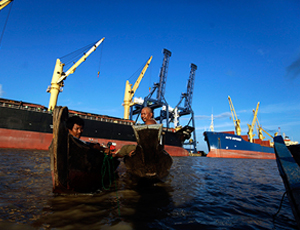Special Economic Zones in Myanmar
By Collin Baffa
 Jun. 28 – Myanmar has seen rapid economic growth following its recent democratic and economic reforms, which included the repealing of Myanmar’s export taxes, decreasing import taxes and providing greater access for foreign direct investment. FDI into Myanmar increased from US$300 million in 2009-10 to US$20 billion in 2010-11, with its GDP rising from a rate of 5 percent in 2009 to over 6 percent in 2012.
Jun. 28 – Myanmar has seen rapid economic growth following its recent democratic and economic reforms, which included the repealing of Myanmar’s export taxes, decreasing import taxes and providing greater access for foreign direct investment. FDI into Myanmar increased from US$300 million in 2009-10 to US$20 billion in 2010-11, with its GDP rising from a rate of 5 percent in 2009 to over 6 percent in 2012.
Following these reforms, Myanmar soon began to further facilitate the establishment of special economic zones (SEZs). In 2011, Myanmar established the Central Body for the Myanmar Special Economic Zone, a regulatory body responsible for overseeing foreign investment in the country. The Myanmar SEZ Law and the Dawei SEZ Law were also passed in 2011, which established several SEZs throughout Myanmar to encourage economic growth and foreign investment.
A primary draw of the SEZ laws includes several incentives, such as:
- A five year tax holiday;
- 50 percent income tax relief on items exported overseas for five years;
- 50 percent income tax relief on reinvested profits from overseas exports for five years;
- A five year exemption on custom duties on approved products; and
- The granting of 30 year land leases.
There are currently three SEZs under development in Myanmar: Dawei SEZ, Thilawa SEZ and Kyuakpyu SEZ.
Investment into Myanmar’s SEZs has been steady, with companies hoping to take advantage of the burgeoning economy and friendly investment incentives it offers. Despite some worries over existing infrastructure deficiencies in Myanmar, investors continue to see a positive outlook for the region. Most recently, India has offered US$150 million to begin establishing a fourth SEZ in the city of Sittwe.
Dawei Special Economic Zone
A deep-sea port and industrial estate spanning 250 square kilometers are currently being built in the Dawei Special Economic Zone located in Southeast Myanmar along the Andaman coast. The area will be home to several industries, including steel, fertilizer, power and petrochemical plants. There will also be a shipyard for construction and repair of vessels using the port, which is expected to see 100 metric tons of freight each year upon completion.
The project has received funding and support from several nations and international companies. Most recently, Thailand has joined Myanmar in contributing capital to the Dawei SEZ project, and it has taken part in an infrastructure development plan for the area.
Thailand will contribute 35 percent of the costs for the construction of the deep-sea port. Also, the Italian-Thai Industrial Group will contribute US$300 million to develop the industrial estate project, and will be given a 25 percent share of the project’s management in return.
Japan, China, and South Korea will also participate in the development of the SEZ. Tourist, recreational, and residential developments are also planned.
Thilawa Special Economic Zone
The Thilawa Special Economic Zone project is located in Myanmar’s southern Yangon region and shares its border with Dawei. The project is in the early stages of development, but has already received significant financial commitments from Japanese companies. The SEZ will be home to textile, manufacturing and high-tech industries, as well as a deep-sea port.
Myanmar and Japan will jointly develop the area, with Japanese companies holding a 49% stake in the project.
The Thilawa project has been attractive to investors due to its proximity to Myanmar’s commercial hub and existing ports. The first phase of construction is expected to cost US$205 million, and it will be completed in 2016.
Kyaukpyu Special Economic Zone
The Kyaukpyu Special Economic Zone is located along the central western coast of Myanmar on Ramree Island. The area already serves as port for export and transportation of Myanmarian goods, such as rice.
An oil and gas terminal financed by the China National Petroleum Corporation is in the final stages of construction, and a pipeline linking Myanmar and China is in the works in the area as well. Furthermore, a container port and gas-turbine power plant are also under development.
Plans for the SEZ are being finalized this year, and completion of the first phase is expected in 2016. The area will be home to industrial, logistics, and service industries, and will focus on processing local resources, such as agricultural goods and minerals.
The Kyaukpyu SEZ has been attractive to Chinese investors due to its strategic location as the quickest trade route by sea between India and China. Also, extensive rail and air infrastructure are currently being developed in the region to increase linkage between China and Kyaukpyu.
The area is expected to rival Singapore as the regions petrochemical hub upon completion.
Related Reading
 An Introduction to Development Zones Across Asia
An Introduction to Development Zones Across Asia
In this issue of Asia Briefing Magazine we break down the various types of development zones available in China, India and Vietnam specifically, as well as their key characteristics and leading advantages. This magazine will be available as a complimentary download through the months of May and June, 2013.
- Previous Article Report: U.S. Should Prioritize Engagement with ASEAN
- Next Article July 2013 ASEAN Regional Meetings








